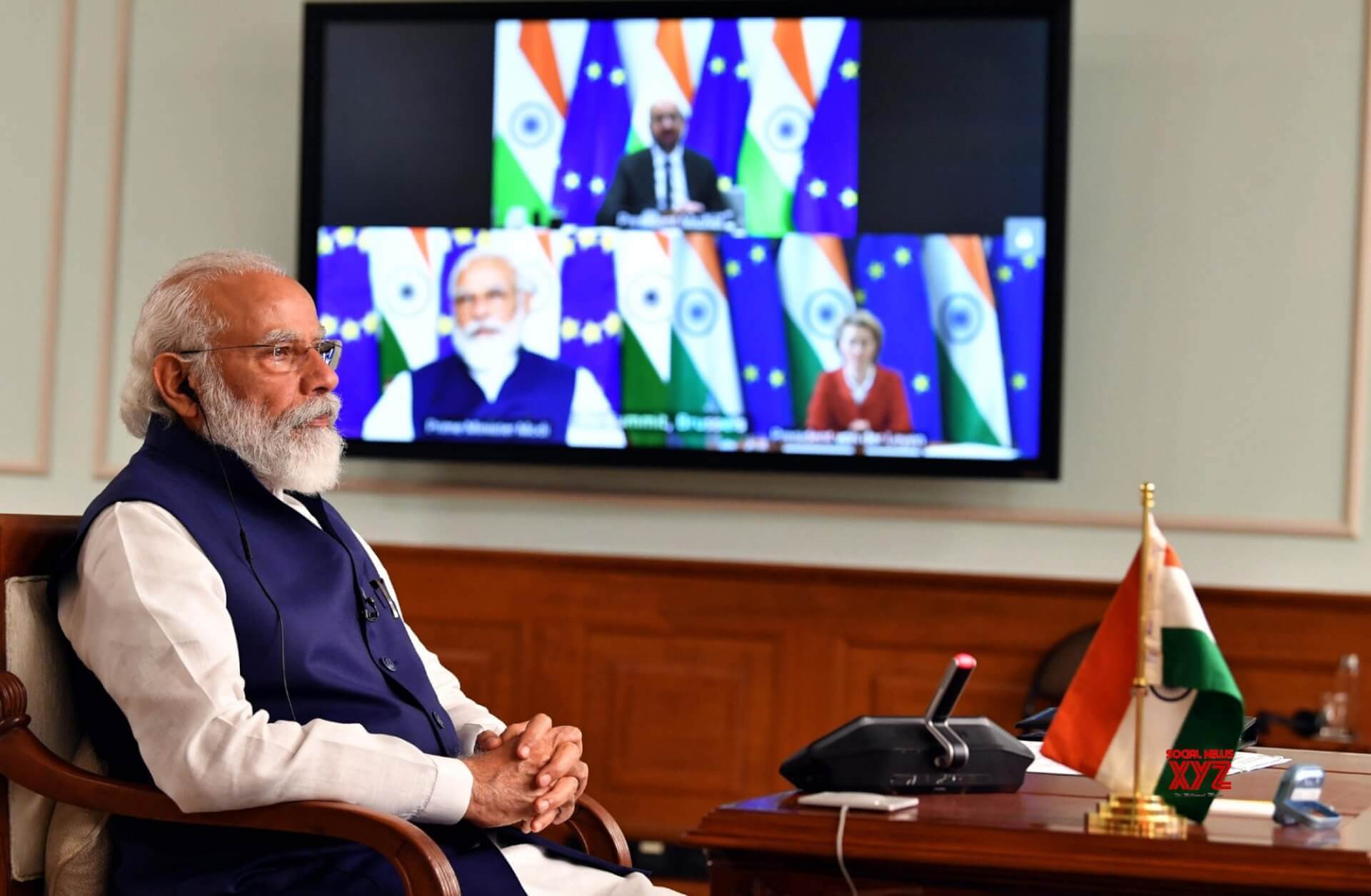The 15th EU-India Summit, held on 15 July, 2020 via video conference, was attended by Indian Prime Minister (PM) Narendra Modi, European Commission President Ursula von der Leyen, and European Council President Charles Michel. In the follow up to the event, Modi tweeted, “I am confident that this Summit will further strengthen our economic as well as cultural linkages with Europe.” Officials of the European Union (EU), too, expressed their optimism on the outcomes of the summit, specifically on issues relating to “investment, trade and defence”.
The joint statement issued in pursuance of the meeting addressed several issues of significance to the growing EU-India diplomatic friendship. These included strengthening multilateral organisations and securing global peace, coordinating efforts in healthcare and medical research, committing to the more robust implementation of the Paris Agreement, ensuring cross-border data protection, and promoting cultural exchange and educational cooperation through migration.
Amidst criticism of EU’s approach with China, India did not shy away from bringing up the growing tensions along the Indo-China border during the summit. Previously, several member states of the EU have expressed their discontent with China’s aggression against India and Hong Kong. For instance, France expedited the delivery of Rafale jets to India to counter the growing threat from China. Moreover, recently, during the first in-person meeting of the EU’s foreign ministers, representatives of France, Germany and Sweden called for strict measures against China, including “extending the EU’s export ban on items that could be used for torture or repressive policing, like rubber bullets, giving activists long-term refugee status in the EU and allowing for more Hong Kong students to study in Europe”.
However, the EU, as a bloc, has been criticised for its soft stand against the aggressive acts of China over the past year. This was reflected in their response to India’s comment on its border rift with China as well. Charles Michel said that both India and China are essential for the EU, and that its relationship with China is “complex”. Further, he did not condemn China’s actions in the region at larrge. He merely said that the EU supports “all the efforts in order to maintain a channel of dialogue in order to find peaceful solutions”. Again, this reflected the EU’s reluctance to take a strict stand against China’s violations of international principles and human rights. However, he said that the EU could “relate” more to India as the foundations of both the EU and India are firmly grounded on democratic principles.
However, the most significant consequence of the summit was the establishment of a “high-level dialogue” at a “ministerial level”, which aims to “provide guidance to the bilateral trade and investment relations and to address multilateral issues of mutual interest”. The joint statement said that both EU and India “reaffirmed their commitment to work towards a balanced, ambitious and mutually beneficial trade and investment agreements, opening markets and creating a level playing field on both sides”.
Previously, EU official’s raised concern about the “protectionist” undertones of India’s “Atmanirbhar Bharat” slogan. However, during the video conference, PM Modi confirmed that the aim of the domestic campaign was “integrating domestic production in India to global supply chains”.
While the establishment of a “high-level dialogue” is beneficial for the flourishing trade relations between the two, this still falls short of the ambitions to create a Free Trade Agreement (FTA). While both the EU and India have expressed the importance of such a deal since 2007, the conversation has been halted since 2013.
There are several issues that the two countries disagree on. The EU has previously complained that the Indian side refuses to adequately open up its automobiles and wine and spirits market to the EU. Further, India has shown resistance to allowing access to European firms into its financial sector, specifically for “banking, insurance and e-commerce”. Moreover, the EU’s insistence on including issues such as labour regulations and environmental laws into the FTA is also unacceptable to India. In the past, these have proven to be points of major contention between the two parties.
Before the summit, von der Leyen said that the EU was aiming to secure a free trade deal with India. However, in a media briefing following the meeting, she said that while the new ministerial dialogue would “advance things and promote our common interest in moving forward towards a free trade agreement”, the two countries were “not there yet”. Similarly, Vikas Swarup, the secretary (West) for the Ministry of External Affairs said, “there is no time frame set for the conclusion of the Bilateral Trade and Investment Agreement (BTIA) but both sides have agreed that the two ministers mandated to take the discussions forward should meet as early as possible.”
The conclusion of this agreement will benefit both the EU and India. In 2018-2019, India exports to the EU were estimated to be worth $57.17 billion, and imports from the EU were worth $58.42 billion. Recognising the symbiotic trade relations of the two countries and the scope for further expanding this, Charles Michel said, “The EU is India’s largest trade and investment partner. But India represents only about 2% of EU external trade. This is clearly an area that offers impressive potential for significant future growth. We agreed to enhance conditions for traders and investors.”
Image Source: IANS/PIB
India and EU Establish High-Level Dialogue for Trade Relations During Summit
The 15th India-EU summit was conducted through video conference on 15 July.
July 16, 2020

